
Boeing Aircraft Patents
Famous Aircraft from Boeing

Join Us on Facebook
Looking at the Air Age Through Patents

Our treatment of aircraft began as an account of my trials and tribulations in building a 1948 airplane model kit. Since then, we have developed a wealth of patent diagrams for historic aircraft. On November 25, 2009 we split this information into smaller pages in a format that will load quickly. We split the material into six segments, corresponding to the six boxes or "buttons" below. If you came in from a search engine looking for something very specific, click here for the Analytical Index that will enable you to find a specific topic.
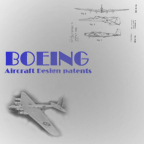
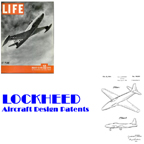
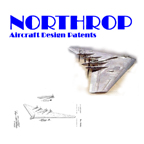

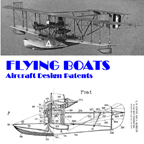
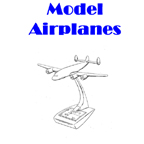
For those of you who don't like buttons, go to the analytical index to find just what you're looking for.
Boeing Aircraft Patents- Boeing Model 215 Flying Pencil Bomber
- Boeing Model 247 Airliner
- Boeing Model 273 (XF-7b) Fighter
- Boeing Model 294 Bomber
- Boeing Model 307 Stratoliner Airliner
This is part of a general Retro Lifestyle/Swing Dancing website. We have a Guide to 1940s Treasures and a Swing Dance Calendar for Washington DC.. Please feel free to Contact Us if you'd like to comment on the golden age of balsa wood models.
Aircraft Patented by the Boeing Corporation
This company was founded in 1916 by William E. Boeing as Pacific Aero Products Corporation. The name changed to Boeing Airplane Company in 1917. It bid successfully for the San-Francisco-Chicago airmail route in 1927 and formed subsidiary Boeing Air Transport to operate the route; as other airlines were acquired, this became Boeing AirTransport System. The company merged with Pratt & Whitney, Standard Steel Propeller Co, and two small aircraft manufacturers to form United Aircraft & Transport Corporation in 1929. All of these divisions continued to operate under their original identities. United Air Lines was formed as holding company for the airlines. In 1934 legislation prevented aircraft and engine manufacturers from operating airlines: those of the former Boeing Air Transport System reorganized into a new United Air Lines. Boeing, together with Stearman, a wholly owned subsidiary, adopted the name Boeing Aircraft Company. The name Boeing Airplane Company was readopted in 1948. In May 1961, following acquisition of Vertol in 1960, became known as The Boeing Company. In 1996,Boeing merged with McDonnell Douglas. Boeing also purchased Rockwell International's aerospace and defense units, these being retitled Boeing North American Inc. and subsequently becoming part of Boeing's Space Systems business unit.
More information about the Boeing patents discussed below may be found at this website.
Boeing Model 215 "Flying Pencil" Bomber

The Boeing Model 215
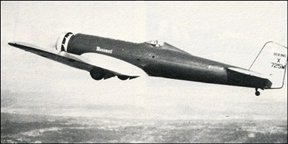
The Boeing Monomail
The Model 215 is a scaled-up version of the Monomail
It is also known as the B-9
Click to Enlarge
In 1930 Boeing developed a bomber "on spec",hoping to acquire a military contract. The goal was to make the bomber very fast but also very stable (to facilitate aiming.) They based their design on Boeing's very popular Model 200 Monomail, a revolutionary all-metal low wing monoplane.
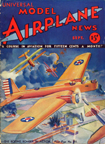
Boeing Model 215 (YB-9) "Flying Pencil"
Model Airplane News Cover Art for September, 1932
by Jo Kotula
Click to Enlarge
Here is a somewhat grainy video of the Model 215/B-9 in flight:
The fuselage was extended well forward of the wing to accommodate a bomb-aimer/gunner in the nose. Immediately behind him was a radio operator. There were open cockpits for pilot, co-pilot and a rear gunner. The 1025kg bomb load could be divided between an internal bomb bay and underwing racks.




Patent Diagrams for the Boeing Model 215 and Predecessor
Left Two: Model 215 Design Patent Design Patent D-87,310
Right Two: Monomail Design Patent Design Patent D-91,327
Click to Enlarge
Click Here to learn how to get free patent diagrams
The narrow profile of the fuselage earned the Model 247 the nickname "Flying Pencil." The Cleveland model airplane company made a contemporaneous detailed scale model kit of the Boeing 247.
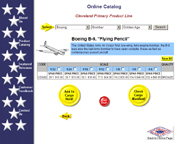
Boeing Boeing Model 215 (B-9) at the Cleveland Site
You can buy the plans and patterns that will enable you to make this model right now. Click Here to go to the exact location on the Cleveland Website to get them.
Boeing Model 247 Airliner
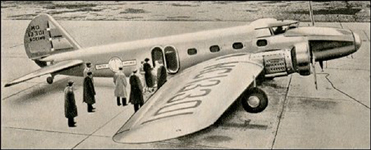
The Boeing Model 247
Click to Enlarge
The Boeing Model 247 was the logical extension of the Model 215 (above) bomber which, in turn grew out of the single engine Monomail, the common denominator being the cantilever monoplane wing. Development focused on the fuselage to provide accomodation for accommodation for a pilot, copilot, stewardess and 10 passengers. Looking backward, the Boeing 247 was the prototype for the modern airliner. Here is a 1935 article from Popular Mechanics that shows some of the logistical aspects of flying and maintaining the Boeing Model 215.
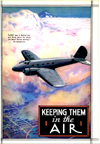
Keeping Them in the Air
In Popular Mechanics July, 1935
Click here to download a free ".pdf" of "Keeping Them in the Air"
Click to Enlarge
The Model 247 had impressive technical features as well. It could climb and maintain altitude with a full load with one engine inoperative. It was also equipped with pneumatic de-icing boots to prevent ice accretion at high altitude.


Patent Diagrams for the Boeing Model 247
Design Patent D-87,440
Click to Enlarge
Click Here to learn how to get free patent diagrams
The airplane was used by United Airlines. Here is a link to a video that shows the Model 247 in action. In this film, "United" masquerades as "General Airlines". and entered World War II as the C-73 transport. The Cleveland company made a scale model kit of the Boeing Model 247.
The Model 247 was well-accepted by the public. Cleveland offered a kit for the 247, but two engine aircraft were generally beyond the capabilities of children. It is reported that the Cleveland 247 is a good subject for free-flight and radio control modeling.
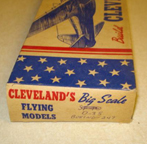
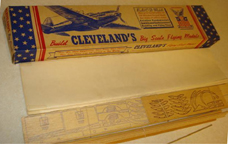
Cleveland Model of the Boeing Model 247
Click to Enlarge
You can buy the plans and patterns that will enable you to make this model right now. Click Here to go to the exact location on the Cleveland Website to get them.
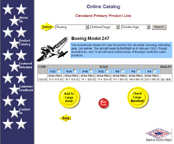
Boeing Boeing Model 247 at the Cleveland Site
Boeing Model 273 (XF-7b) Fighter
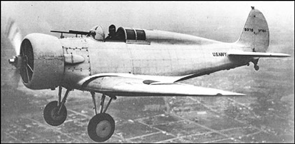
The Boeing Model 273 (XF-7b)
Click to Enlarge
the XF7B-1 (Model 273) was designed for a 1932 Navy specification. It the first all-metal cantilever low-wing monoplane single-seat fighter with a retractable undercarriage. Powered by a Pratt & Whitney SR-1340-30 engine rated at 550hp at 3050m, the XF7B-1 featured a fully-enclosed cockpit and was flown for the first time on 14 September 1933. Armament comprised two 7.62mm machine guns. The US Navy considered that the XF7B-1 offered inadequate view and too high a landing speed for shipboard operation, and the sole prototype was scrapped after in March 1935.


Patent Diagrams for the Boeing Model 273
Design Patent D-88,978
Click to Enlarge
Click Here to learn how to get free patent diagrams
Boeing Model 294 Bomber
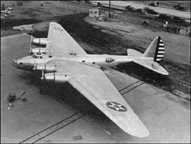
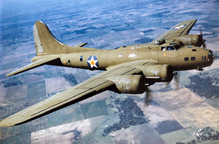
The Boeing Model 294 (left)
Prototype for the B-17 (right)
Click to Enlarge
In 1933 the army issued a requirement for a design study of a long-range bomber (8046 km) was included to provide long-range strategic capability. Both Boeing and Martin produced design studies,. The Army selected the Boeing Model 294 and the gave it the designation XB-15. As of October 1937, it was then the largest aircraft to be built in the USA.
The Model 294 introduced a number of original features, including internal passages within the wing to permit minor engine repairs or adjustments in flight; two auxiliary power units within the fuselage to provide a 110-volt DC electrical system; sleeping bunks to allow for "two-watch" operation. A flight engineer was added to reduce the pilot's workload. The design specified powerful engines that were still under development. The prototype had to use engines with half the horsepower and, as such, the airplane had inferior performance and flew purely an experimental aircraft. This prototype was adapted with cargo doors and flew as a cargo transport during World War II under the designation XC-105


Patent Diagrams for the Boeing Model 294
Design Patent D-97,355
Click to Enlarge
Click Here to learn how to get free patent diagrams
Due to the multiple turret positions, it was believed that this aircraft could defend itself without fighter escort. The gunners had to operate in ultra-cold temperatures wearing oxygen masks. Numerous technological innovations, such as the electrically heated suits shown below, were developed to facillitate this self-defense capability. All, eventually, proved to be ineffective.

Heated Flying Suit
Patent No. 2,277,772
Click to Enlarge
As the powerful Pratt & Whitney engines became available, the B-294 morphed into the B-17, as shown in the following video:
Boeing Model 307 "Stratoliner" Airliner
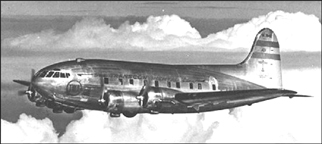
The Boeing Model 307 "Stratoliner"
Click to Enlarge
The Model 307 introduced a fuselage of circular cross-section, so that it could be pressurized to assure a smooth flight for the crew of five and 33 passengers at altitude above atmospheric turbulence.
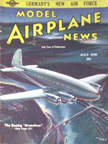
Boeing "Stratoliner"
Model Airplane News Cover Art for July, 1938
by Jo Kotula
Click to Enlarge
The prototype Model 307 (named Stratoliner because of its high cruising ceiling) flew for the first time on 31 December 1938. A total of ten were built: the prototype; five SA-307B for Transcontinental & Western Air; three S-3O7 for Pan American; and a single SB-307B for the late Howard Hughes. The TWA planes were used by the Army's Air Transport Command during World War II for VIP transport over the North and South Atlantic. The Army designated them C-75.
Here is a video about the Stratoliner:
The Model 307 had the distinction of being the first civil airliner with a pressurised cabin to enter service. It also introduced an extra crew member - known as the flight engineer - to relieve the captain of certain duties such as power plant, fuel and pressurisation management and monitoring.


Patent Diagrams for the Boeing Model 307
Design Patent D-104,335
Click to Enlarge
Click Here to learn how to get free patent diagrams
Click Here for more information about the Boeing "Stratoliner".
Counter for the Entire Site (not just this page..)
Home | About Lindy | 1940s Collectibles | Upcoming Events | Vintage Clothing
The Guide - Establishments - Travel - Accessories
Music | Links | Photo Gallery | Extras | Contact